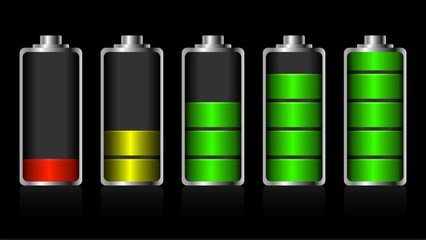Lithium Thionyl Battery-Definition, Explanation and Working
Jan 02, 2020 Pageview:934
What is a lithium thionyl battery?
Lithium thionyl chloride battery is a type of cell that falls into the category of primary lithium battery modifications. This means that it is a version of the lithium-ion cell that is non-rechargeable. These batteries are commonly used in industrial, medical and remote applications due to its voltage, lifespan, discharge voltage and temperature range properties. They are manufactured in two well-recognized ways, using spirally wound and Bobbin-type construction methods.
There are several advantages that lithium thionyl chloride offers its users all around. These features come preinstalled into the batteries and include:
Higher load voltage which is also stable
Lithium thionyl chloride cells contain an open circuit voltage of approximately 3.6 V.
A non-flammable electrolyte
The electrolyte used in the cells is non-flammable but after various chemical reactions and decompositions due to mishandling, it can pose a hazard.
Higher energy densities
These batteries have a high energy density due to their high nominal voltage of approximately 3.6. The cells can reach up to 1220 Wh/L and 760 Wh/kg, for a capacity of about 18.5 Ah at a voltage of 3.6 V.
Amazing draining capacity
A low self-discharge rate
The self-discharge rate for lithium thionyl chloride is meager, less than about 1% per year after storage at room temperature, thus supporting storage for extended periods.
Stainless steel container or casing
A hermetic glass-to-metal sealing
Broad temperature range
The batteries can function within temperatures ranging from as low as -55°C up to +125°C. For maximum capacity, the cells are rated to a maximum temperature of approximately +85°C, but specially modified cells can extend these limits.
Longer lifespan
Because of their exemplary low yearly self-discharge rate of less than 1%, the batteries have a shelf life of over ten years when stored at room temperature.
Lithium thionyl batteries also pose some disadvantages, just like any other lithium battery since it also has its issues that were never resolved. The limitations are as follows:
Safety precautions
The battery provides high energy densities and contains dangerous materials in its composition such as lithium and thionyl chloride. When the cells are handled carelessly disregarding the proper protective guidelines, it could result in physical damages to the battery, leaking, overheating, fires, explosions and even the generation of toxic gases. These effects can cause injury to the user’s body and their environment as well. One should, therefore, always adhere to the right guidelines for handling and caring for their lithium thionyl chloride batteries.
Voltage delay
When the batteries are discharged using massive current after being exposed to average or standard temperatures for long periods, the working voltage falls steeply and then gradually goes back to normal.
High price
Lithium thionyl chloride batteries come at no low cost for consumers.
Environmentally hazardous
When being manufactured, the thionyl chloride contained within the cells gets decomposed into hydraulic acid and later, with the addition of moisture, sulfur dioxide. The resulting compound is very corrosive and can mainly pollute the environment. This is why production sites are required to be well ventilated for the safety of the workers and the surrounding.
The various lithium thionyl chloride applications include:
Desktops
Medical equipment
Electronic Toll Collection Systems
FA instruments
Electric meters for gas, water or electricity
PDAs
OA machines such as Fax, printers, and copiers, etc
Is lithium thionyl chloride lithium-ion?
Yes, lithium thionyl chloride is a modification of lithium-ion. However, unlike the rechargeable lithium-ion cells, lithium thionyl chloride is a primary non-rechargeable battery. However, both consist of lithium in their chemistries and portray similar functions and properties common to all lithium cells.
How does lithium thionyl battery work?
A Li/SOCL2 battery, or rather lithium thionyl chloride cell, is made up of a lithium anode and carbon cathode. The electrolyte is usually non-aqueous and constitutes of lithium tetra chloroaluminate compound. The thionyl chloride makes up both the electrolyte and cathode material. When there is an excess of the thionyl chloride electrolyte, sulfur and sulfur dioxide are dissolved leading to the accumulation of a specific amount of pressure. When the batteries are stored, the anode reacts with the electrolyte to produce lithium-chloride upon contact. This precipitate is essential as it prolongs the storage life of the cell. However, it also causes a voltage delay at the start of the discharge process.
Lithium thionyl batteries have severe voltage lag which in turn causes the voltage to recover back to around 95% of the peak voltage within minutes. When the batteries are kept at room temperature for about two years, the LiCl precipitate, lithium-chloride, formed at the anode leads to multiple high-current brakes that dissipate the precipitate and recovers the working voltage lost. The lithium-chloride formed is them deposited at the cathode and thus blocks the pores which prevent the effective transfer of electrons between the electrodes. While the cathode, in this case, is said to expand and thus creating a larger surface area for the transfer of ions, its micropores are also blocked, and this leads to battery failure.
Lithium thionyl chloride batteries, also known as Li/SOCL2, are usually manufactured in a broad range of different sizes as well as configurations. Different battery capacities are designed in different forms, shapes, and chemical compositions to meet specific requirements for their various applications. The initial lithium thionyl chloride battery system contained some safety hazards and voltage delay issues. The safety matter was likely to occur because of the high rate of discharge posed by the battery and the tendency of it getting overly discharged above average standards.
Batteries that have low discharge rates are typically utilized for voltage backup of memory together with other several applications that require a long operating or working life. Lithium thionyl chloride is usually mixed with other additives to improve various specifications and performances of different batteries. A good example is the use of massive square batteries applied in military operations as a backup power source in case of emergencies. Li/SOCL2 is therefore constituted in the construction of such cells to provide prolonged working periods for such backup equipment.
Conclusion
Lithium thionyl batteries vary in their applications since they can provide large as well as small voltage rates. This property makes them more applicable in a wide range of areas and for different purposes. With many outstanding features at its disposal, it comes as no surprise to know that the future holds a favorable possibility for the contributions of this battery once it has been successfully modified into the perfect cell.
Leave Message
Hottest Categories
-
Hottest Industry News
-
Latest Industry News












